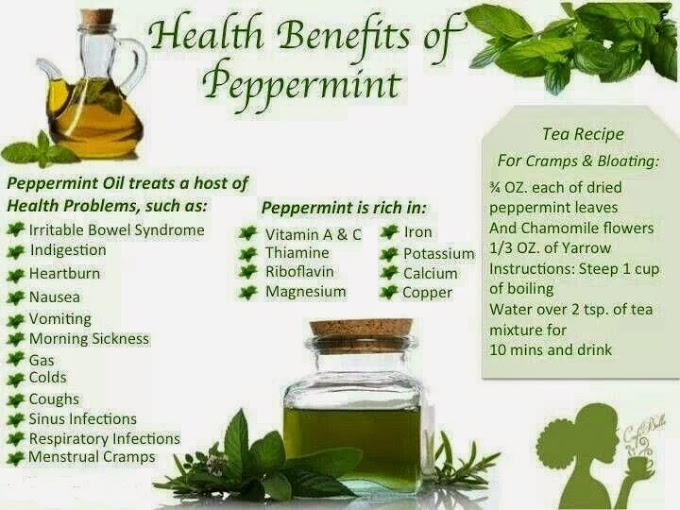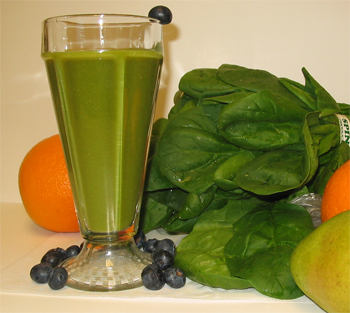Peppermint is a plant. The leaf and oil are used as medicine.
Peppermint is one of the most widely consumed single ingredient herbal teas, or tisanes. Peppermint tea, brewed from the plant leaves, and the essential oil of peppermint are used in traditional medicines.
The phenolic constituents of the leaves include rosmarinic acid and several flavonoids, primarily eriocitrin, luteolin and hesperidin. The main volatile components of the essential oil are menthol and menthone.
History of Peppermint as a Supplement
The herb peppermint, a cross between water mint and spearmint grows throughout Europe and North America. Peppermint is often used to flavor foods, and the leaves can be used fresh or dried in teas.
Today, peppermint oil is used as a remedy for nausea, indigestion, cold symptoms, headaches, muscle and nerve pain, stomach problems, and bowel conditions such as irritable bowel syndrome.
Peppermint definitely has a history as a supplemental herb that can help different conditions although it should be noted that back in 1990 the FDA pulled it off the market as a digestive aid. Funny enough people still use peppermint for exactly that.
Essential oil of peppermint may be found in very small doses in capsule or liquid forms. The essential oil can also be diluted with another oil and applied to the skin.
However, human studies of peppermint leaf are limited and clinical trials of peppermint tea are absent. Adverse reactions to peppermint tea have not been reported, although caution has been urged for peppermint oil therapy in patients with GI reflux, hiatal hernia or kidney stones.
Natural Remedies Using Peppermint
Peppermint has significant antimicrobial and antiviral activities, strong antioxidant and antitumor actions, and some antiallergenic potential.

Peppermint has been shown by many people to be effective for the following:
Irritable bowel syndrome (IBS). Although some older studies suggest that peppermint oil does not affect IBS, most research shows that taking peppermint oil by mouth reduces stomach pain, bloating, gas, and bowel movements in people with IBS as well as upset stomach, diarrhea, bacterial overgrowth of the small intestine, and gas.
Human studies on the GI, respiratory tract and analgesic effects of peppermint oil and its constituents have been reported. Several clinical trials examining the effects of peppermint oil on irritable bowel syndrome (IBS) symptoms have been conducted.
Relaxing the colon during medical exams, including barium enemas. Using peppermint oil as an ingredient in enemas seems to relax the colon during barium enema examinations. Also, taking peppermint oil by mouth before the start of a barium enema also seems to decrease spasms.
Breastfeeding discomfort. Research suggests that breastfeeding women who apply peppermint oil on their skin have less cracked skin and pain in the nipple area.
Heartburn . Taking peppermint oil by mouth together with caraway oil seems to reduce feelings of fullness and stomach spasms. A specific combination product containing peppermint (Iberogast, Medical Futures, Inc) also seems to improve symptoms of heartburn, including severity of acid reflux, stomach pain, cramping, nausea, and vomiting. The combination includes peppermint leaf plus clown’s mustard plant, German chamomile, caraway, licorice, milk thistle, angelica, celandine, and lemon balm.
Spasms caused by endoscopy. Research shows that peppermint oil can reduce pain and spasms in people undergoing endoscopy, a procedure used to see within the gastrointestinal tract.
Migraine headache. Applying a peppermint solution to the skin at the start of a migraine and again 30 minutes later seems to increase the percentage of patients who experience headache resolution.
Tension headache. Applying peppermint oil to the skin seems to help relieve tension headaches.
Breathing Problems. Peppermint is used for the common cold, cough, inflammation of the mouth and throat, sinus infections, and respiratory infections. Some people inhale peppermint oil for treating symptoms of cough and colds, and as a painkiller.
Side Effects and Cautions When Using Peppermint
Peppermint oil appears to be safe for most adults when used in small doses. Possible side effects include allergic reactions and heartburn.
Capsules containing peppermint oil are often coated to reduce the likelihood of heartburn. If they are taken at the same time as medicines such as antacids, this coating can break down more quickly, thus increasing the risk of heartburn.
Tell all your health care providers about any complementary health practices you use. Give them a full picture of what you do to manage your health. This will help ensure coordinated and safe care.
Study on Peppermint and Sports Exercise Performance
I ran across a study done just a little while ago on the effectiveness of peppermint in exercise. Although sports performance is definitely “off label” for peppermint I was struck by the effect that it had.
This study aimed to investigate the effects of peppermint ingestion on the physiological parameters and exercise performance after 5 min and 1 h.
Thirty healthy male university students were randomly divided into two groups. Maximum isometric grip force, vertical and long jumps, spirometric parameters, visual and audio reaction times, blood pressure, heart rate, and breath rate were recorded three times: before, five minutes, and one hour after single dose oral administration of 50 µl of peppermint essential oil.
The results revealed significant improvement in all of the variables after oral administration of peppermint essential oil. Experimental group compared with control group showed an incremental and a significant increase in the grip force (36.1%), standing vertical jump (7.0%), and standing long jump (6.4%).
Data obtained from the experimental group after five minutes exhibited a significant increase in the forced vital capacity in first second (35.1%), peak inspiratory flow rate (66.4%), and peak expiratory flow rate (65.1%).
After one hour, only peak inspiratory flow rate showed a significant increase as compare with the baseline and control group. At both times, visual and audio reaction times were significantly decreased.
Physiological parameters were also significantly improved after five minutes. A considerable enhancement in the grip force, spiromery, and other parameters were the important findings of this study.



